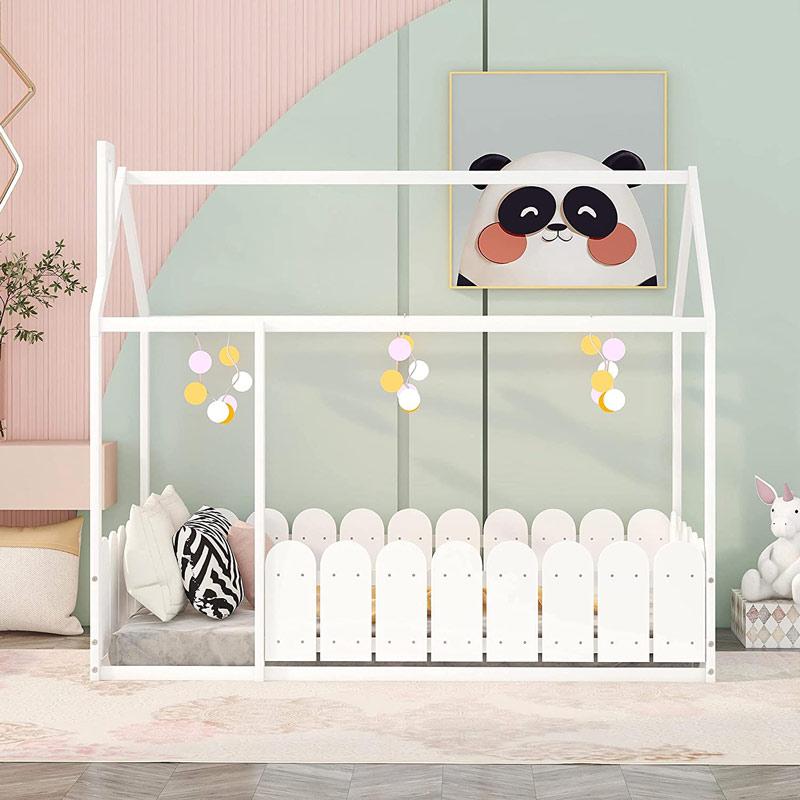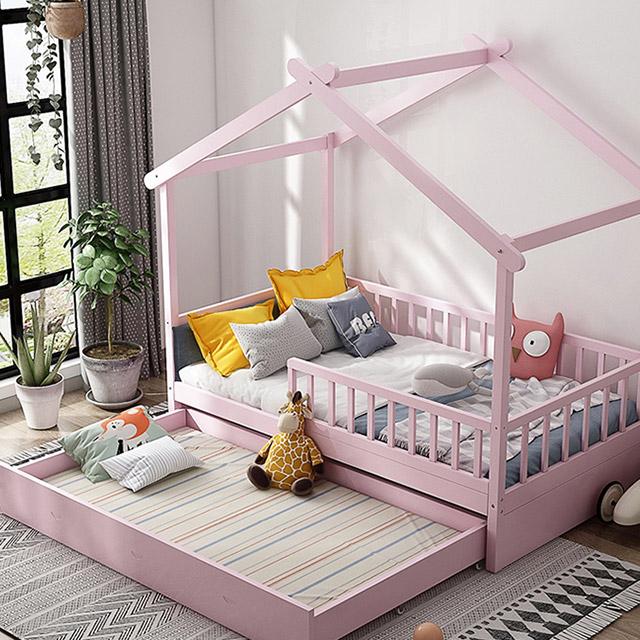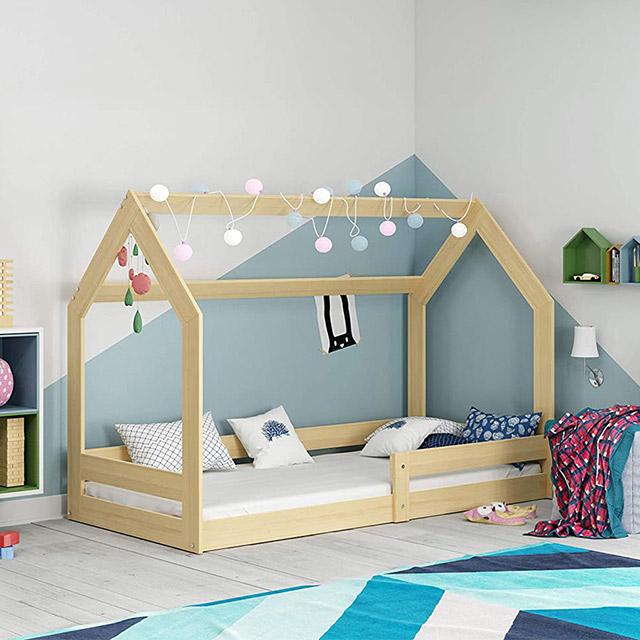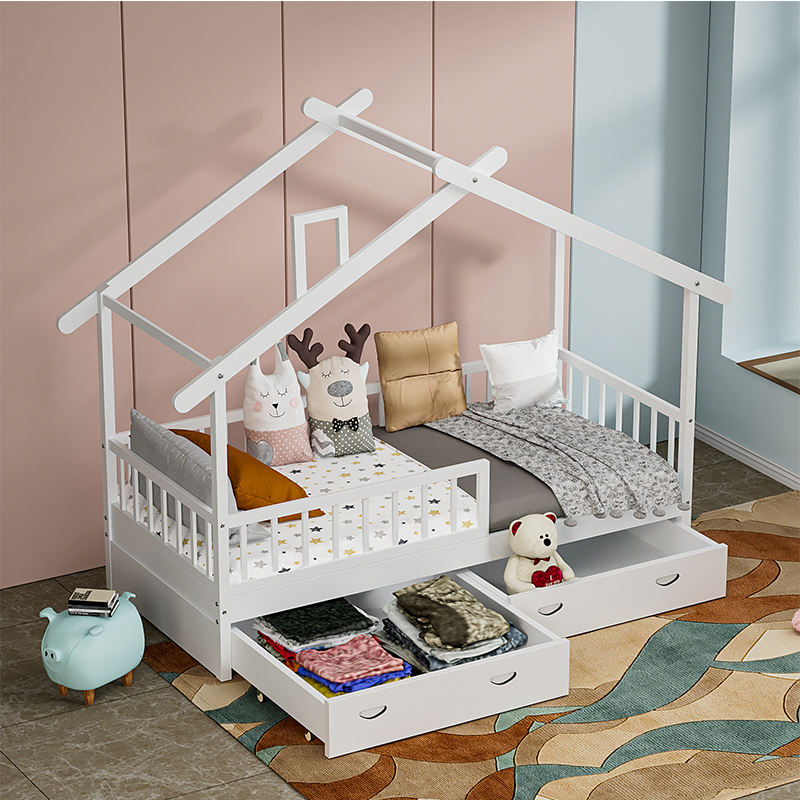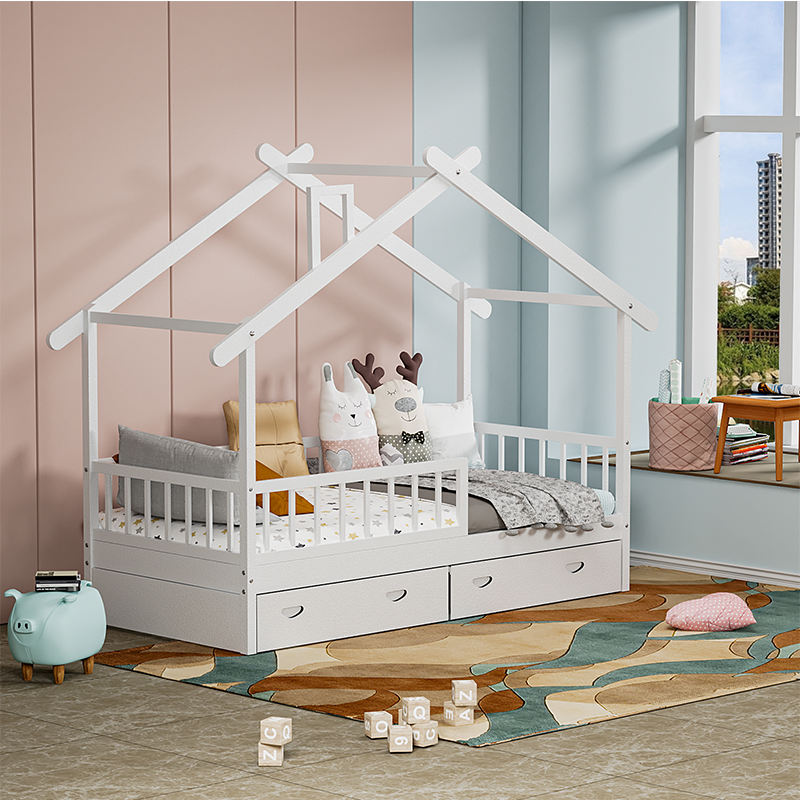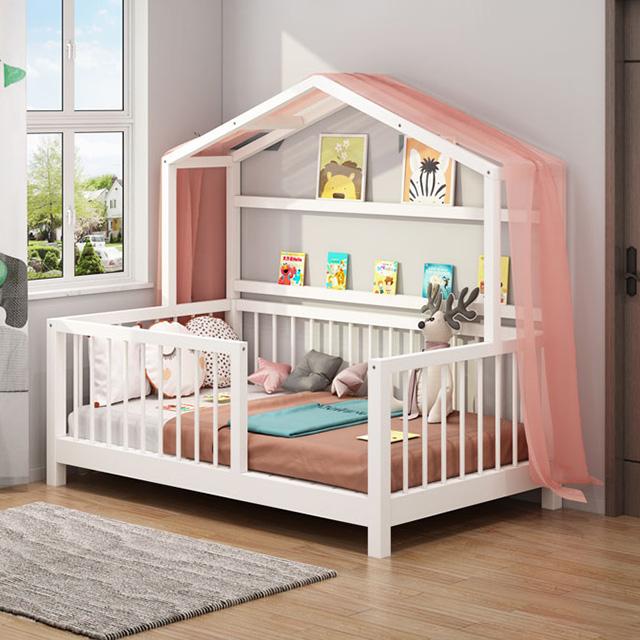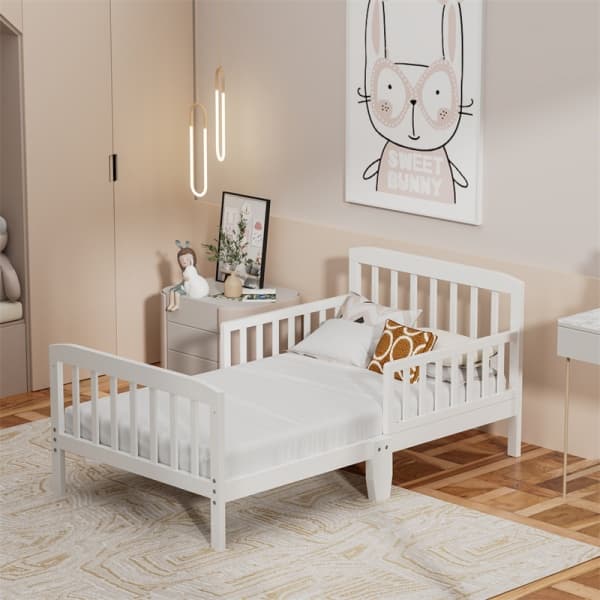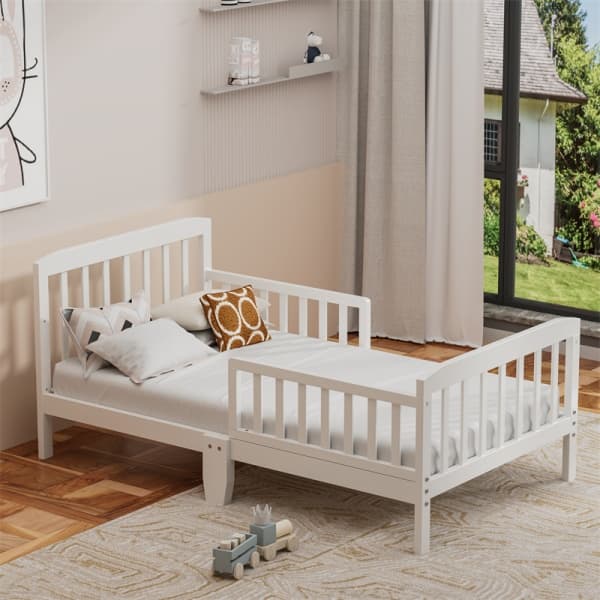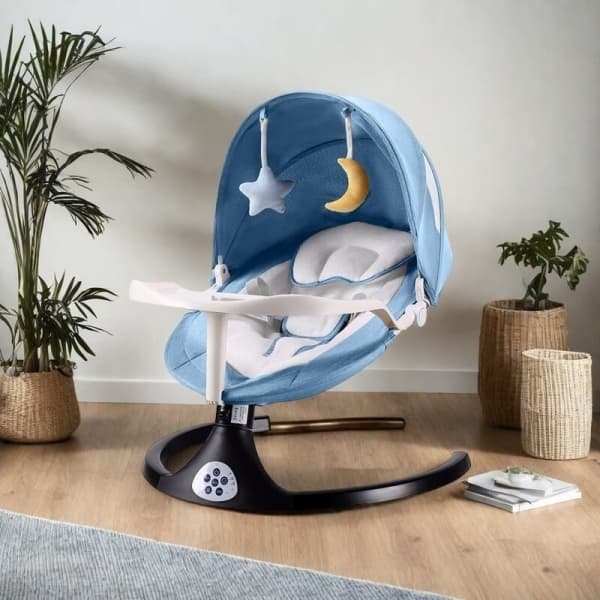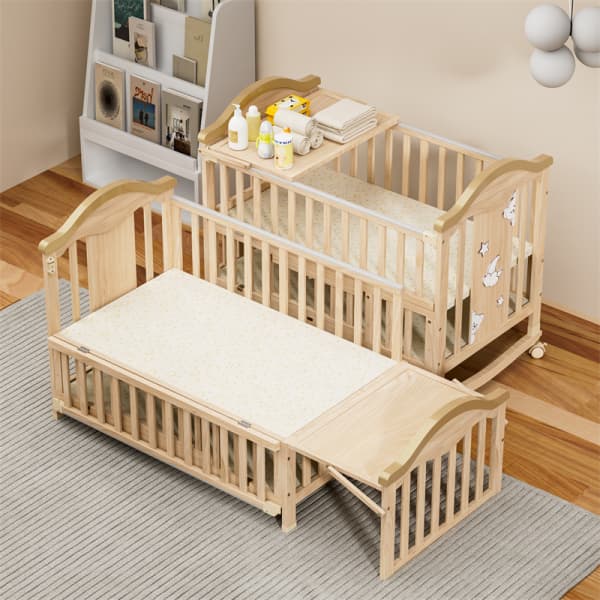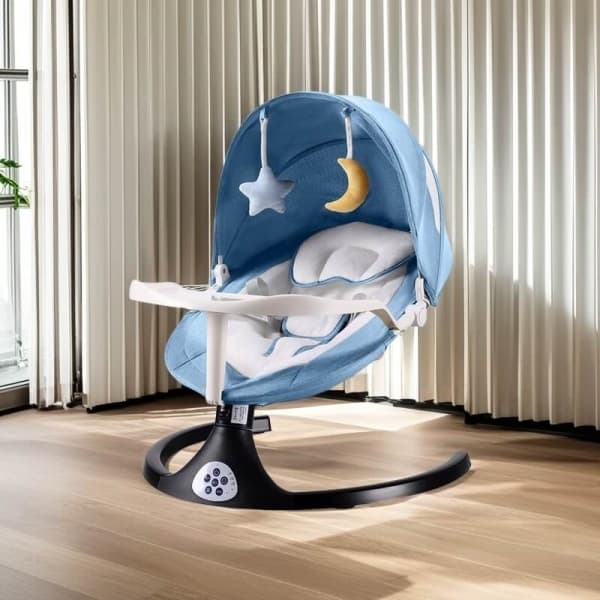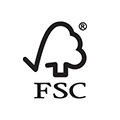When it comes to creating a cozy and inviting bedroom for children, the bed is often the centerpiece. Among the myriad of options available to parents and caregivers, the house bed stands out for its unique design and versatility.
This comprehensive guide will delve into the characteristics of house beds, their suitability for different ages, reasons for their popularity, and the advantages they offer for children.
Let’s embark on this journey to find the best house bed for your child’s needs.
Characteristics of House Beds
House frame beds are characterized by their house-like structure, often complete with a roof, windows, and sometimes even a chimney. These beds are designed to look like miniature houses, providing a playful sanctuary where children can sleep.
It typically has a low profile, with the mattress positioned close to the floor. This low height makes it easier for young children to get in and out of bed independently, promoting a sense of autonomy and freedom.
Many Montessori house beds are designed with an open concept, meaning they don’t have a closed-off structure like traditional beds with headboards and footboards. This open-concept design can create a more welcoming and spacious feel for children when they’re in bed. Some beds come with built-in safety rails along the sides to prevent children from rolling out of bed during the night.
What Age Are House Beds For?
House beds are suitable for a wide age range and are loved by many style-loving families.
They are particularly well-suited for toddlers who are transitioning from a crib to their first bed. The low height and enclosed design provide a sense of security, making this transition smoother for both the child and the parents. Typically, house beds are recommended for children aged 2 years and older.
House beds are particularly popular for preschool-aged children who have outgrown their cribs but may still need a bed with safety features such as guardrails to prevent falls. Preschoolers often enjoy the novelty of sleeping in a bed that resembles a mini-house.
As children grow, house beds continue to be a suitable option. The playful design can easily be adapted to suit older children up to the age of 8 or 9. Some house beds are designed to grow with the child, with adjustable sizes or the ability to convert into a more traditional bed frame, ensuring longevity and value.
It’s also worth considering that house beds come in various sizes, including twin, full, and even queen sizes, which means they can be appropriate for children, teens, and even adults who appreciate the charm and design of it.
Why Are House Beds so Popular?
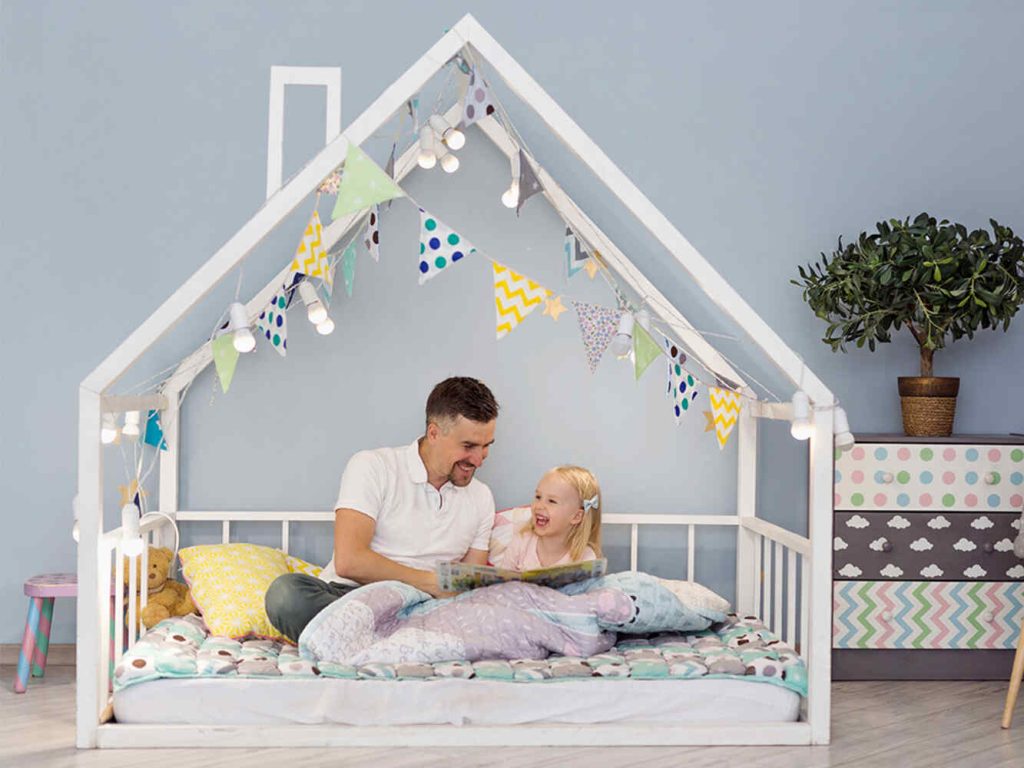
The popularity of house beds has soared in recent years, and there are several reasons behind this trend.
First and foremost is the aesthetic appeal. House beds offer a charming addition to any child’s bedroom, with their unique design capturing the hearts of children and adults alike. They frequently appear in magazines focused on interior design.
Another reason for its popularity is its role in promoting imaginative play. Children are naturally drawn to spaces that stimulate their creativity, and a bed that doubles as a playhouse does just that. It becomes the backdrop for countless adventures, from pretending to be a homeowner to camping out in the wilderness.
Furthermore, parents are recognizing the practical benefits of house beds for kids. Their sturdy construction and low height make them a safer option, while the enclosed design can help children who have difficulty sleeping alone feel more secure.
Advantages of Using a House Bed for Children
1. Stimulate Children’s Imagination and Creativity
A children’s house bed serves as more than just a sleeping area; it becomes a space for your child to play, explore, and express themselves.
Children often use their house beds as pretend homes, castles, or forts, engaging in imaginative play that is crucial for their cognitive and emotional development.
2. Improve Sleep Safety
Most house beds are designed with safety rails or barriers that prevent children from falling out while they sleep. Moreover, they are typically low to the ground, reducing the risk of injury if a child does happen to fall out.
This also makes them more accessible for younger children who might struggle with climbing up into a traditional bed.
3. Cultivate Children’s Sense of Independence
Having their little house gives them a feeling of ownership and control over their space, helping to build their self-confidence and autonomy. It can also make the transition from crib to bed smoother and less intimidating for toddlers.
4. Unique Aesthetics
They add a charming and whimsical touch to any child’s bedroom, making it feel more personalized and cozy. Many parents find that house beds are an easy way to make their child’s room look stylish and unique without resorting to over-the-top decorations or themes.
Factors to Consider Before Buying a House Bed
Size: The house bed’s dimensions should match the scale of the bedroom. It should neither be too large that it cramps the room nor too small that it looks insignificant. Also, the size should be sufficient to comfortably accommodate the person who will use it. For this, consider the height and number of people intended to use the bed.
Style and Design: Beds come in various styles – modern, traditional, rustic, minimalist, and many more. The style you choose should complement the overall décor of your bedroom. Also, remember that while aesthetics are important, functionality is paramount. For instance, if you have limited space, you might want to consider a bed with built-in storage.
Budget: The cost of beds can differ significantly based on factors like size, style, material, and brand. Establishing a budget beforehand and adhering to it is crucial when shopping for a bed. Look for a bed that offers the best value for your money rather than just opting for the cheapest option.
Learn About the Different Sizes of House Beds
1. Twin House Bed
Size: 38 inches wide and 75 inches long
The twin house bed is a compact option that fits perfectly in smaller bedrooms or shared spaces. It has enough space for one person to sleep comfortably. This size is ideal for children, teenagers, or adults who have limited space but still want the comfort and aesthetic appeal of a house bed.
2. Full House Bed
Size: 54 inches wide by 75 inches long
A full house bed, also known as a double house bed. Larger than the twin, it offers more space and is ideal for single adults who like to spread out or for couples who don’t mind snuggling up.
3. Queen House Bed
Size: 60 inches wide by 80 inches long
The queen-sized bed is even more spacious, it’s a popular choice for couples as it provides ample room for two people to sleep comfortably without disturbing each other’s space. Moreover, the additional length renders it appropriate for taller individuals as well.
4. king Single House Bed
Size: 42 inches wide by 80 inches long
This size is less common but offers a generous sleeping area that falls between the twin and full sizes. Making it perfect for taller individuals who need more legroom or for those who just prefer having extra space to stretch out.
Exploring the Variety of House Bed Styles Available
1. House Bed with Trundle
A house bed with a trundle features a pull-out bed underneath the main bed frame. This additional sleeping space is convenient for accommodating guests or sleepovers without taking up extra floor space during the day.
2. House Floor Bed
A house floor bed is placed directly on the floor without a raised frame. This minimalist style fosters independence as children can easily get in and out of bed on their own. It’s also a safe option for younger children who are transitioning out of cribs.
3. Double House Bed
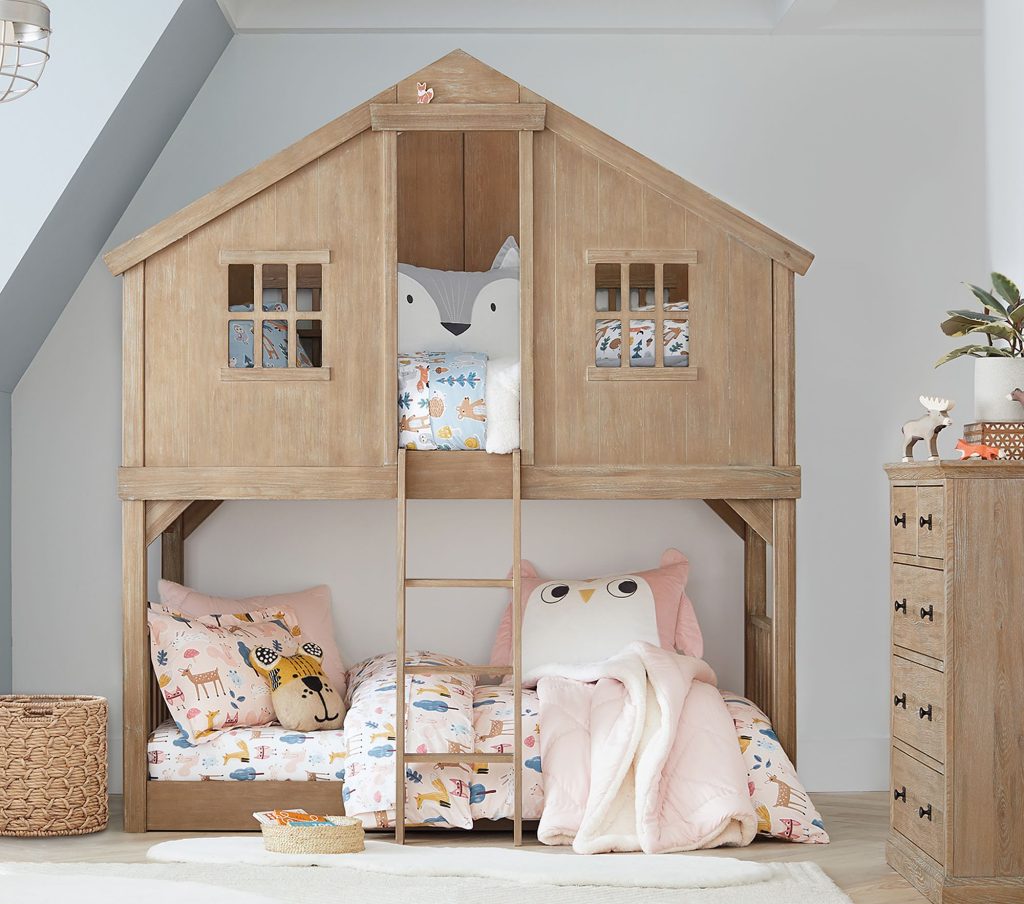
A double house bed, also known as a bunk-style house bed, includes two sleeping areas stacked vertically. This space-saving design is ideal for shared bedrooms or families with multiple children, offering separate sleeping quarters while maximizing floor space.
4. House Bed with Storage
House beds with built-in storage options feature drawers, shelves, or cubbies integrated into the bed frame. This provides convenient storage space for toys, books, clothing, and other essentials, helping to keep the bedroom organized and clutter-free.
5. House Bed with a Slide
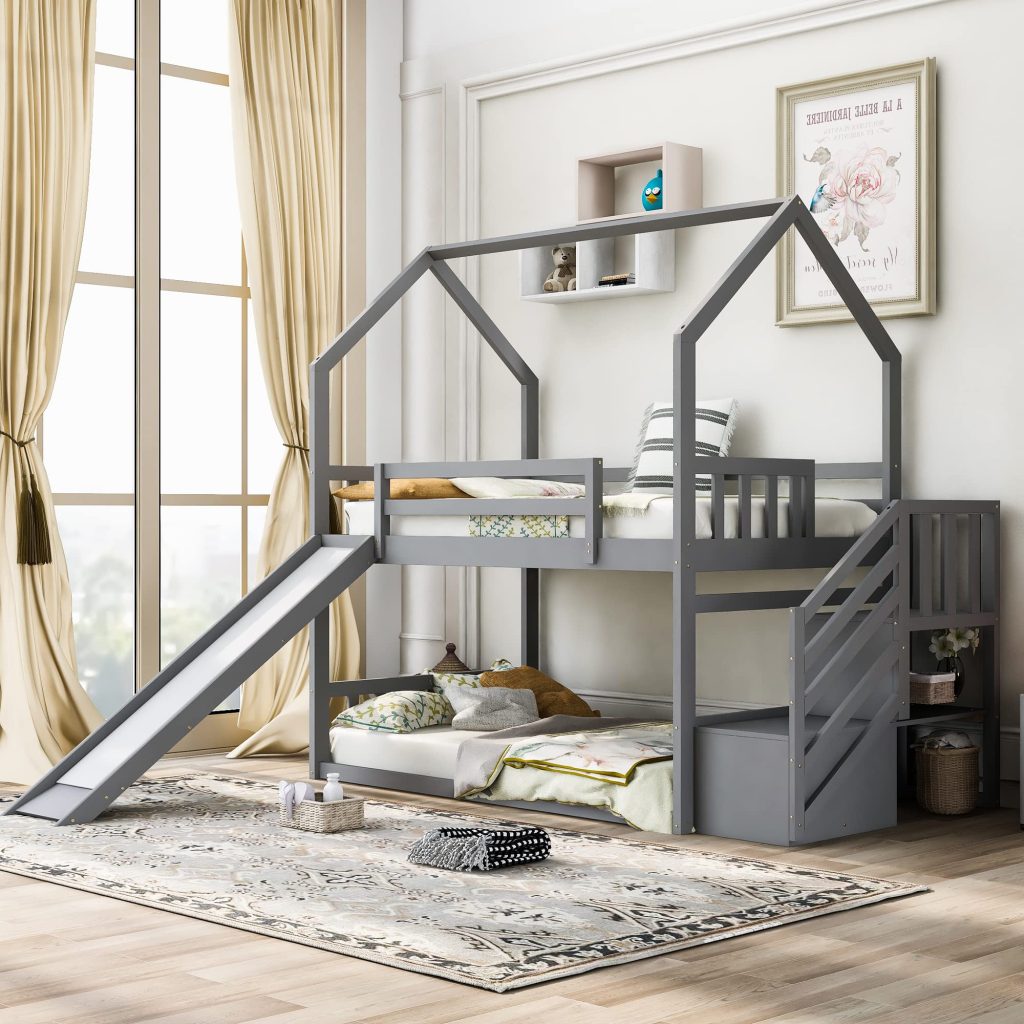
A house bed with a slide adds an element of fun and adventure to the bedroom. Children can slide out of bed in the morning or use it as part of imaginative play. It’s a playful addition that enhances the overall enjoyment of the bed.
6. House Bed with Rails
House beds with built-in safety rails offer added protection against falls, especially for younger children. These rails provide peace of mind for parents while ensuring a safe sleeping environment for their little ones.
7. Loft House Bed

A loft house bed combines a traditional house bed design with a raised loft platform above the sleeping area. This results in extra room beneath the bed, which can serve various purposes such as play, storage, or a snug reading corner.
8. Canopy House Bed
A canopy house bed features a canopy or tent-like structure over the bed frame, creating a cozy and enclosed sleeping space. This adds a touch of whimsy and privacy to the bed, making it feel like a magical hideaway.
Ideas for Accessorizing and Styling the House Bed
Bedding: For a more elegant and timeless look, opt for neutral tones like whites, greys, and beiges. However, don’t hold back if you’re more into vibrant hues! Go for bold patterns and prints that reflect your personality.
Canopy or Tent: If your single house bed doesn’t already have a canopy or tent-like structure, consider adding one to create a cozy and enclosed sleeping space.
Decorative Pillows: Incorporate decorative pillows in fun shapes, patterns, or themes to add visual interest to the bed. Mix and match different textures and sizes to create a layered and inviting look.
Wall Decor: Enhance the walls surrounding the house bed with artwork, decals, or wall hangings that reflect your child’s interests and personality. Consider adding a gallery wall, framed prints, or a personalized name sign to personalize the space.
String Lights: Add a touch of magic to the bed area with string lights or fairy lights. Drape them along the roofline of the house bed or hang them around the walls to create a warm and cozy ambiance.
Under-Bed Storage: Utilize the space underneath the house bed for storage solutions such as baskets, bins, or rolling drawers. This is a practical way to keep toys, books, and other essentials organized and easily accessible.
Playful Accessories: Incorporate playful accessories such as stuffed animals, plush rugs, or themed decor items that complement the style of the house bed. These accessories can enhance the imaginative play experience and make the bed area feel more inviting.
Reading Nook: Create a cozy reading nook next to the kids house beds with a small bookshelf, bean bag chair, or floor cushions. This designated space encourages reading and quiet relaxation before bedtime.
Window Treatments: If your wooden house bed frame has window cutouts, consider adding curtains, blinds, or fabric panels to create a sense of privacy and coziness.
Safety Reminders for Decorating Around the Bed
1. Avoid Overcrowding
Avoid overcrowding the area around the house beds for kids with furniture, decor, or other items that could pose a tripping hazard or obstruct pathways. Keep the space around the bed clear to allow for safe movement and access.
2. Secure Heavy Items
Ensure that any heavy or bulky items such as bookshelves, dressers, or wall-mounted decor are securely anchored to the wall to prevent them from tipping over and causing injury.
3. Choose Safe Materials
Select decor items made from safe and non-toxic materials, especially if they will be within reach of young children who may be prone to putting objects in their mouths. Avoid items with sharp edges or small, removable parts that could pose a choking hazard.
4. Check Electrical Outlets
If there are electrical outlets near the bed, ensure that they are covered with safety caps or outlet covers to prevent children from inserting objects into them. Keep cords for lamps, nightlights, or electronic devices safely tucked away and out of reach.
5. Fire Safety
Avoid placing flammable items such as curtains, bedding, or decor items near heaters, candles, or other heat sources. Install smoke detectors in the bedroom and ensure that they are in working order.
6. Monitor Climbing Hazards
If the bed has a loft or elevated platform, be mindful of climbing hazards. Ensure that any ladders, steps, or access points are sturdy, secure, and age-appropriate. Consider using safety rails or guards to prevent falls.
Conclusion
Finding the best house bed for your child involves careful consideration of the bed’s characteristics, the child’s age, and personal style preferences. With the right house bed, your child’s bedroom can become a haven for rest, play, and growth.
Clafbebe is a baby products manufacturer with over 20 years of experience, wholesale and exporting a wide range of high-quality Montessori house beds that meet international, European, and American safety standards.
Contact us for house bed wholesale and customization solutions!
Recommended Related Articles:


